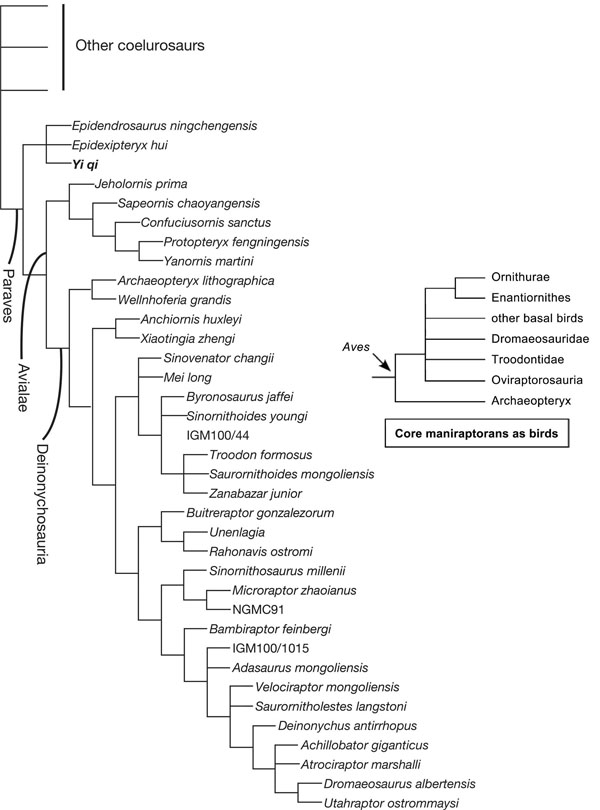Fig. (6) The “Birds are Maniraptoran Theropods” hypothesis is the dominant view today, but the controversy arises as to whether the “core maniraptorans” (variously defined, but normally including oviraptorosaurs, troodontids and dromaeosaurs) are basal or derived. That they are derivatives of the early avian radiation is the view favored here, and can be seen in many recent cladograms, as shown here from a very recent simplified “coelurosaurian” phylogeny showing the position of the newly discovered Jurassic scansoriopterid Yi [25]. Right, simplified cladogram by James and Pourtless [7], showing core maniraptorans as birds, the view favored here. Note that the central core of the phylogeny does not differ in basic concept from that promoted by myself and many others, showing core maniraptorans within the avian domain, without getting into the cladistic lexical morass. Many would disagree with some of the internal arrangements; for example, Microraptor and Sinornithosaurus are often recovered as basal dromaeosaurs; and oviraptorosaurs are excluded, which I consider derived, secondarily flightless birds, with the basal form Protarchaeopteryx as a volant member. By this view, promoted by Feduccia [4, 8, 9, 77], James and Pourtless [7], Czerkas [13, 18, 24] and many others, core maniraptorans are descendants, rather than ancestors of basal birds; thus the more derived forms are descendant and not ancestral (Feduccia’s Topsy-turvy bird phylogeny [9, 77]). By this view all the problems with bird origins, both from the standpoint of skeletal characters, re-elongating and refashioning already foreshortened forelimbs, digital homology, and ground-up flight origins disappear.


